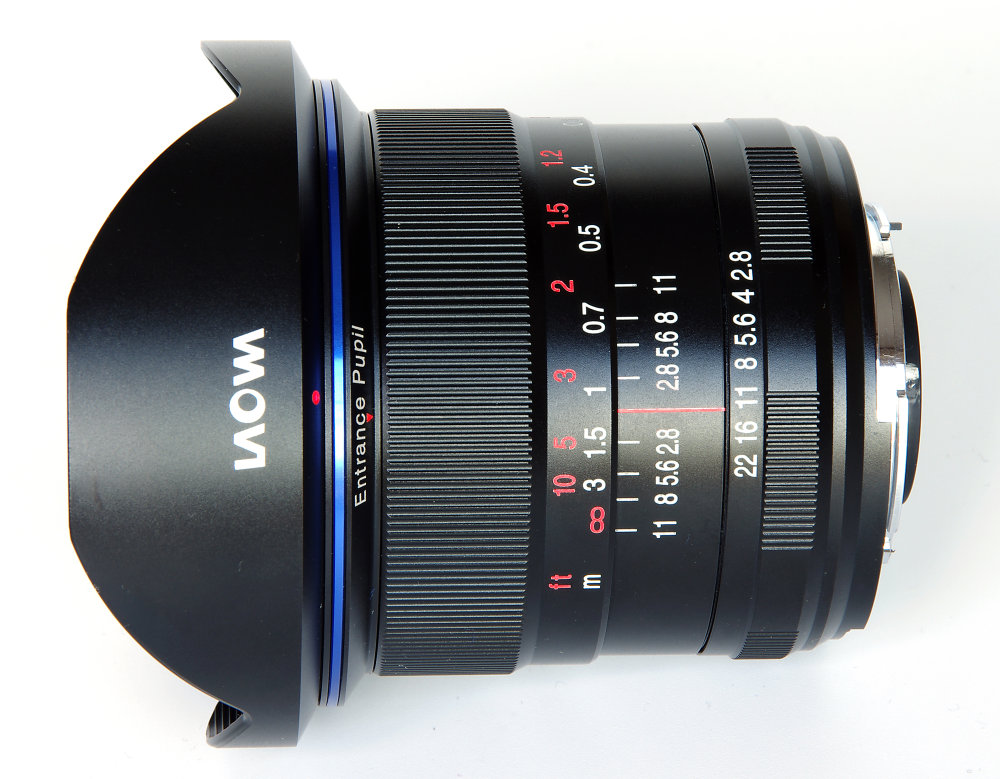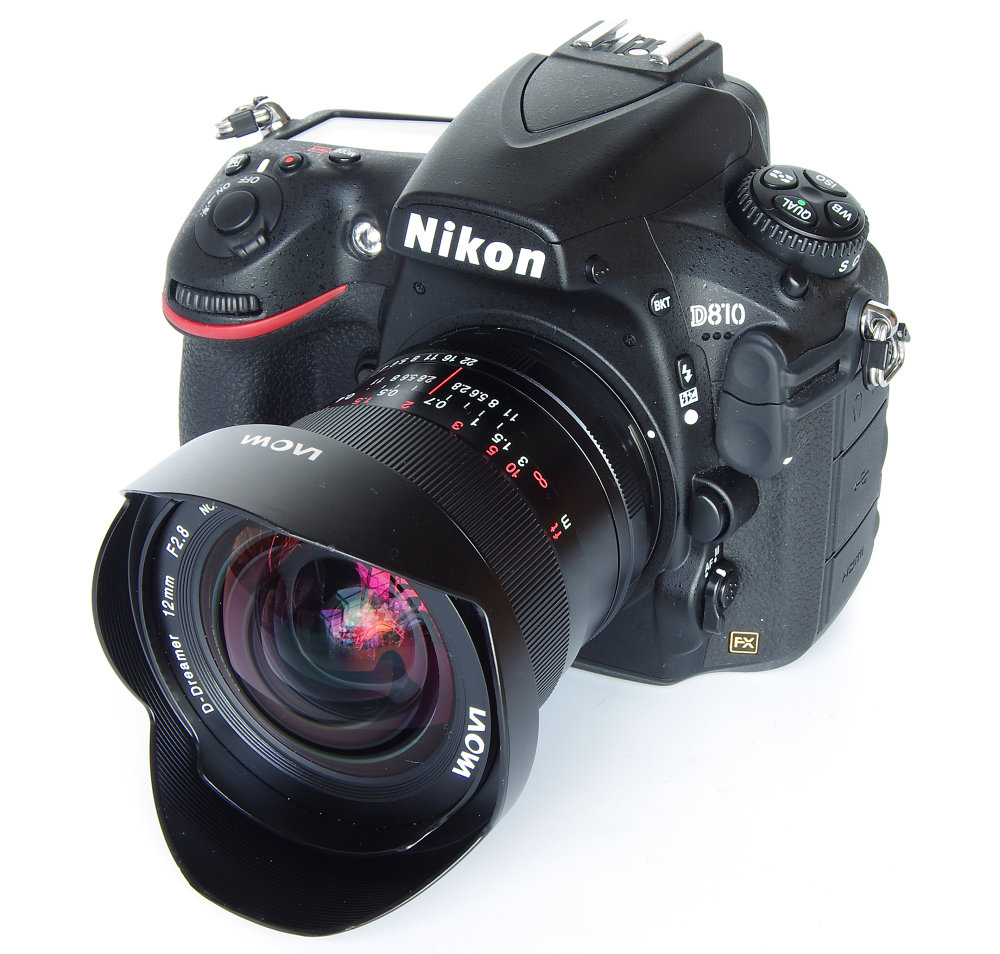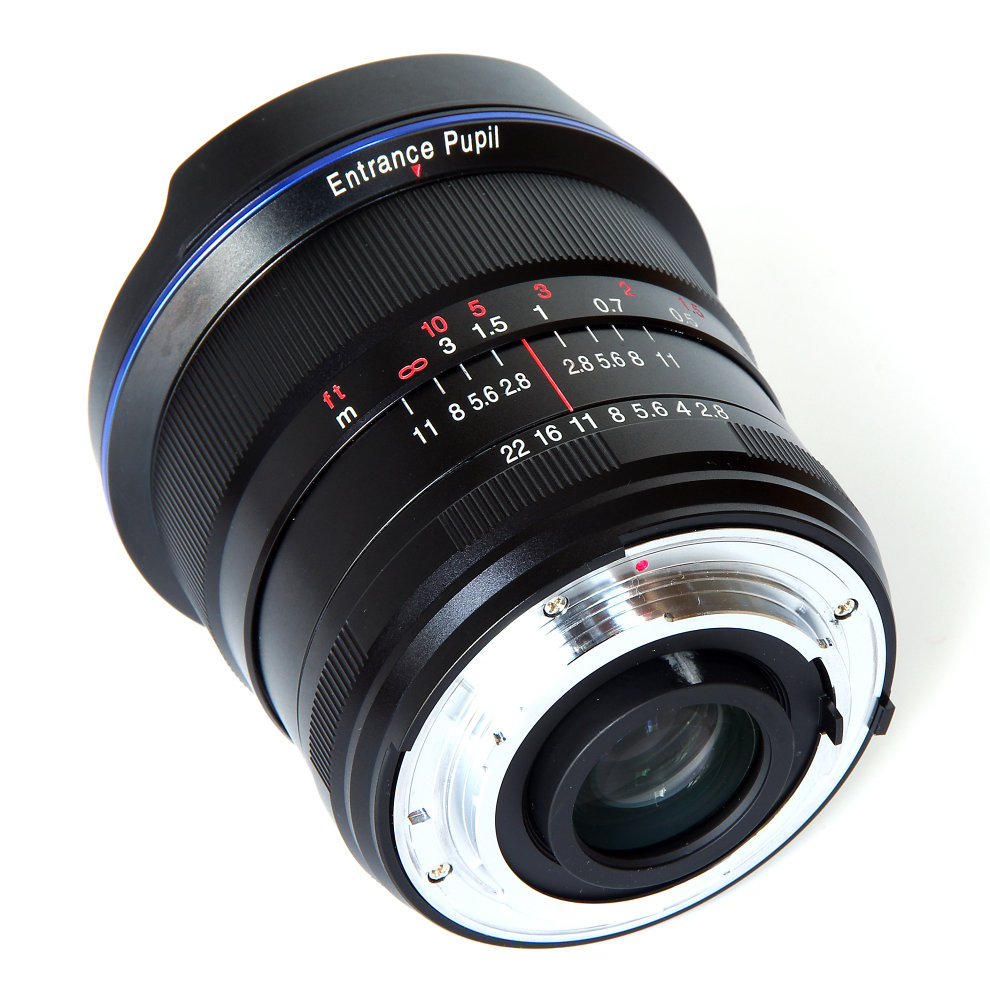Laowa 12mm f/2.8 Review
Laowa 12mm f/2.8 Handling and Features
The lens is solid with a metal construction that gives a feel of quality from the start. It is not overly heavy at 609g and is well matched to the Nikon D810 provided for this review. There is a substantial bayonet fit that accepts the dedicated petal lens hood, although the marking on the hood and the Entrance Pupil index mark do not quite align, a minor point as it has no real effect on image quality. There is no filter thread provided because of the bulbous front element. The Entrance Pupil index is an interesting feature and it marks the point around which the lens should be rotated to make multi-shot panoramic images. This saves panoramic shooters having to locate the nodal point manually, which no doubt they will welcome.
The front element is rather bulbous and the petal hood shields it from being too vulnerable. There is a second hood-like flange fixed to the lens that protects the front element should it be placed face down without the main hood being attached. A sensible precaution and a nice touch.
The lens is multi-coated and comprises 16 elements in 10 groups. Three of these elements are ED (extra-low dispersion) glass and two are aspherical. Focusing is via the wide and nicely ribbed manual focus ring. The lens does not rotate nor does it extend as we focus. It has a diaphragm with just 7 blades, but to be fair the nature of ultra-wide lenses is such that this may well be sufficient to ensure smooth bokeh, that is, smoothness in the out of focus areas in an image.
Focusing is down to a useful 18cm (7.09”), giving a maximum magnification of 0.2x. This represents being able to focus on objects around 5cm (2”) from the front element, which opens up the possibility of some interesting perspective effects in close up photography. There is a helpful depth of field scale behind the bold and extensive distance markings, and finally a conventional aperture ring nearest to the camera body. This works the correct way round for Nikon.
Various mounts are, or will be, available, including Canon EF, Nikon AI, Sony A, Sony E and Pentax K. How these various mounts work with the respective cameras may well vary slightly as there are certainly no electronic contacts on the Nikon AI version, but the AI system does enable the camera to recognise aperture values. In the case of the Nikon D810, these aperture values were one stop out of kilter. f/2.8 registered as f/2 and that differential carried on throughout the range. Of course, as long as we are aware of any foibles like this then we can take them into account.
This has be set against the value of a rectilinear lens that can render straight lines as straight lines whilst covering a staggering 122 degrees on full frame cameras. At one time this would have been impossible, but lens design has moved on and we are seeing some previously impossible things becoming available and affordable to many. For many shots the key to a lens that is so wide is to get in close, then get in closer and closer, because if we stand back all the details in the image will simply be small and uninteresting. The 12mm needs us to get right into a scene and then the amazing perspective that results from the short subject distance can really be appreciated.
Probably the biggest difficulty is the manual focus as there is so much depth of field that seeing the sharpest point is actually very tricky. Fortunately, this also means that we can make extensive use of the depth of field markings on the lens and use the hyperfocal distance to maximise the depth of the areas that will appear in focus. Many of the long range examples were shot using this technique, setting the hyperfocal distance for f/8 but then using f/11 to ensure a higher level of sharpness throughout. This can be applied close up as well.
Add your message
Please login here or if you've not registered, you can register here. Registering is safe, quick and free.
photodo Stats
428 MTF tests
74 in-depth photodo reviews
100+ users join each day
Help the lens community by reviewing or rating a lens today via our lens search
Latest Lens Reviews
- Chinon 28mm f/2.8 Vintage Lens Review
- Canon EF 70-200mm f/4L IS II USM Lens Review
- Samyang AF 85mm f/1.4 EF Review
- Sigma 70mm f/2.8 DG Macro Art Review
- Samyang AF 24mm f/2.8 FE Review
- Meike 50mm f/1.7 Review
- Tamron 70-210mm f/4 Di VC USD Review
- Lensbaby Burnside 35mm f/2.8 Review
- Asahi Super Takumar 50mm f/1.4 Review
- Asahi Super-Multi-Coated Takumar 135mm f/3.5 Review



